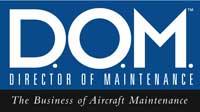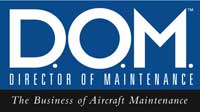
Communication


How much communication is too much? When is communication wrong? I never gave this any thought and just relied on my own sense of what is appropriate, but what I find appropriate might not be what you find appropriate. we seek to find the one right way. we strive for perfect communication. If it were perfect, there would be no problems. If it were perfect, we wouldn’t need instructions to show us the right way. If only …
The mind has a difficult time perceiving what is not intuitive and we try to cope. We all know how to multiply and divide. The principle is simple (leaving out negative numbers) — things get bigger when you multiply and things get smaller when you divide. Negative numbers can reverse this process but the concept is still there. Zeno’s Paradox tells us that infinity multiplied by two is still infinity. We typically think of infinity as a high number but things can also be infinitely small. Infinity divided by two is also still infinity. How is it possible to come up with the same result whether you multiply or divide and it also doesn’t matter which number you use?
You practice music with the aspiration of perfection, but when you perform you must accept the reality that life is not perfect. The more you practice, the better you get as you reach achievable goals that move you closer to your aspiration. However, as Zeno’s Paradox tells us, as you get infinitely closer to your goal you are also infinitely far away. You can only get closer to your destination of perfection with the realization that it will never be reached. Frustrating, isn’t it?
Why try to get better if we can’t reach our goal of perfection? That is a valid question. We are taught in Management 101 that setting unachievable goals demoralizes and demotivates the workforce, so why are we still looking to be perfect? It’s the treadmill of life and delves into the realm of philosophy.
Hangar rules
We work in a world of regulations. We are surrounded by FAA, OSHA, EPA and many other local, state and federal alphabet organizations. We also work under an organizational set of rules and policies and we are also governed by our own sense of ethics, responsibility and decency. Wow! You would think there is no room to maneuver and the path is predetermined. However, there is a lot of free thinking in deciphering these regulations and rules and bouncing them off of our sense of correctness.
We also have maneuverability within all those regulations. How comfortable would you be if a manager told you to fix this item this way? When you ask for the documentation for that, you are met with indignity. “I told you how, that is all you need.” Most of us in aviation know that this just ain’t the way it’s done and demand to see it in print.
Even the documents that we are bound to follow are not infallible. I remember being told in A&P school that there is a high likelihood of an error in any electrical print. There is usually a process that addresses this so corrections can be made (not to make it perfect but to make it better).
Little improvements result in significant improvements. This is the core driver behind what is called Kaizen in the quality world. Documented processes are how we operate. They are used to interpret the regulations, rules and policies and are intended to guide us through the rough waters safely. We usually get into trouble when we deviate from those guidelines — but what if you know the guidelines are wrong? Do you do the job incorrectly to follow the guidelines? Do you do it the way it should be done, in conflict with the document? Usually those are our only two options but there is a third: you stop. That’s it, just stop. Something is wrong or you feel it is wrong and you seek clarification. There is nothing wrong in this. Your manager might ream you out but it is always best to err on the side of safety. It is better if you were wrong and lost a little of your posterior than if you let something go and added to the potential of a catastrophe.
Responsible communications
One area that doesn’t appear to be governed by any process, rule, regulation or policy is communication. There might be some rudiments of what can go on the bulletin board and it is discussed in harassment seminars, but it is pretty much the Wild West in what governs communications. I was recently told of mandated “responsible communications” training at the university where I teach. This was brought about due to government regulations recently passed and many lawsuits brought against educational institutions that have misrepresented themselves.
Responsible communications is simple on the surface. All you need to do is be complete, accurate and truthful. However, if you look up misrepresentation, it is defined as any false erroneous or misleading statement that has the likelihood or tendency to deceive or confuse. Under the rules of responsible communication, a statement that is factually correct could still be construed as “misrepresentation” if the receiver of the information is confused by it, or interprets it as misleading. So the statement, “I know you believe you know what you think I said, but I’m not sure that what you think you heard is what I really meant” has validity. How am I supposed to know what you are thinking? Mind reading is not an easy task, especially when you consider that a misrepresentation could be what is implied, an allusion or an omission.
Written communication
What is clear in my head could be completely muddy in yours. This can become muddier yet when the communication is written. Read the following statement:
I did not steal your wallet.
You can interpret that in a number of different ways — but what if it were spoken? Whatever word gets the inflection will change the meaning. Put the inflection on the bold and underlined word and you will see what I mean.
I did not steal your wallet. (Meaning: someone else stole your wallet.)
I did not steal your wallet. (Meaning: I didn’t steal it, I was just holding onto it until you came back.)
I did not steal your wallet. (Meaning: I stole someone else’s wallet.)
I did not steal your wallet. (Meaning: I stole something else of yours.)
In order to avoid this confusion, the university rules and policy is established to make us better (not perfect). They provide documented procedures that will guide us through the rough seas but I can assure you we are going to get wet. To give you an example of how precise these rules go, we were taught that certain activities are prohibited when referring to the university. These are not the activities you might have in mind. Here are some:
– Use of quantitative superlatives such as biggest, largest or highest (i.e., employment rates) — unless the terms are qualified and are fact based on evidence to support the claim.
– Use of superiority claims such as better, superior or finer — such claims are inappropriate given that education is an intangible service.
– Use of subjective superlatives, such as best, greatest or largest — these cannot be satisfactorily documented and therefore should never be used.
– Making or cause to be made any statement that is in any manner untrue, erroneous or misleading — either by actual statement, omission or allusion.
How would you like to be under those restrictions? The advertising industry would be out of business. This is the university’s desire to go beyond what the Fed’s regulation required. I can understand the need because some universities were remiss and some downright deceptive. On the communication level we have moved not toward improvement but CYA rules. I can show my school pride by saying, “My university is the statistically second-ranked university in the Midwest conference, according to a field survey of 150 universities conducted in 2013 by JJ Power Incorporated and published in the U.S. News, volume four, section three, page 38.” That takes the energy out of it.
In Conclusion
Now getting away from academia and back to the real world, some of those communication guides will be helpful. Pilots parrot what the controller orders. Why don’t we do the same? Paraphrasing orders puts the instructions in your own words. How many times have you done this and the reply was, “No that is not what I mean.” When dealing with complex subjects, play it safe. We will never get it perfect but we keep that as a target and move in that direction.
 Patrick Kinane is an FAA certificated A&P with IA and commercial pilot with instrument rating with 50 years experience in aviation maintenance. ASQ Senior Member with Quality Auditor and Quality Systems/Organizational Excellence Manager certifications; RABQSA certified AS9100, AS9110, and AS9120 Aerospace Industry Experienced Auditor and ISO9001 Business Improvement/Quality Management Systems Auditor. Academically earned BS in Aviation Maintenance Management, MS in Education, and PhD in Organizational Psychology. He is principle owner of PlaneQA LLC and professor at DeVry University
Patrick Kinane is an FAA certificated A&P with IA and commercial pilot with instrument rating with 50 years experience in aviation maintenance. ASQ Senior Member with Quality Auditor and Quality Systems/Organizational Excellence Manager certifications; RABQSA certified AS9100, AS9110, and AS9120 Aerospace Industry Experienced Auditor and ISO9001 Business Improvement/Quality Management Systems Auditor. Academically earned BS in Aviation Maintenance Management, MS in Education, and PhD in Organizational Psychology. He is principle owner of PlaneQA LLC and professor at DeVry University
